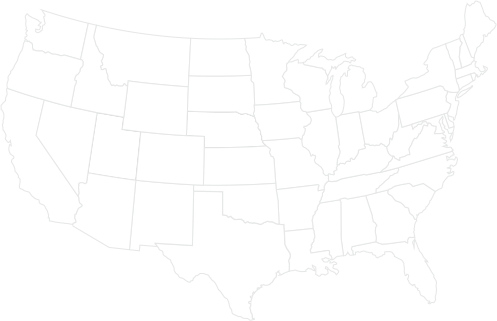Breaking Down An Economist’s 2024 Cottonseed Market Outlook
• Posted in Articles
Whether in the business of growing, ginning, dairy or beef, there are countless players in the agricultural industry with interest in what the future crop year holds for whole cottonseed. That’s why we took some time to reflect on all things cotton with agricultural economist and cotton marketing expert Dr. John Robinson in preparation for the new year.
Here’s what’s happening in the industry and what that might mean for stakeholders as we head into 2024.
A Brief Recap of 2023
As Dr. Robinson explained, 2023 had the potential to be the year so many key players in the industry needed to make up for a devastating prior season. Particularly in the southern plains, terrible 2022 drought conditions seemed to be ending, making way for a better, moister year to follow and strong yields as a result.
Those with a stake in the cotton industry had high hopes as El Niño was expected to kick in strong by spring, bringing an exciting increase in rainfall. But as weather patterns veered off course and the summer of 2023 became exceptionally dry and hot, cotton crops across the United States suffered and hopes of a restorative season diminished.
In short, “Yield potential was not good. 2023 was a disappointment, and it needed to be bountiful,” Dr. Robinson admitted.
Whole cottonseed supply constraints in 2023 even induced some unwanted adjustments to some producers’ cattle rations. As many dairy and beef producers rely on cottonseed as a nutritional component of their animals’ feed, unfavorable climate conditions for cotton production in 2022 have sent waves downstream, impacting several businesses in addition to cotton growers themselves.
What Key Factors Are Impacting The Cotton Industry?
To get a comprehensive view of the industry and a 2024 forecast, it’s important to understand what has the potential to impact cotton. According to Dr. Robinson, these are some potential determinants of cotton in 2024.
Cotton acreage continues to expand north of Texas, through the Oklahoma panhandle and north into Kansas. Dr. Robinson attributes this expansion in part to the Ogallala Aquifer and cites direct implications for cattle and dairy producers as a larger local supply of quality feedstuff in and around the southern plains could help reduce barriers associated with cottonseed transportation.
Dr. Robinson also shared that cotton continues to be an important trade commodity, as Brazil surpasses the United States in acreage and production, and countries like Australia have a climate that lends itself well to a longer growing season, ideal storage conditions and agreeable weather for a good harvest crop.
These factors are some of the considerations that help agricultural economists like Dr. Robinson make predictions regarding cotton yield and prices for the coming crop year. All things considered, Robinson and his team of economists foresee a much more promising landscape for the cotton industry in 2024.
Assessing Cottonseed Dynamics Ahead Of 2024
Dr. John Robinson and his team at Texas A&M University have developed an impressive forecasting model to accurately predict cottonseed prices and help stakeholders plan and prepare accordingly.
If this forecast rings true in 2024, the outlook for the cotton industry is ideal, from production to prices and market dynamics overall.
According to Dr. Robinson’s model, this coming year should bring a little over 11 million acres. Paired with anticipated El Niño conditions, wet weather around planting time next spring might just allow for the largest crop of lint the United States has reaped in years and, as a result, more supply and lower prices for those who contract cottonseed.
This projected resurgence brings hope to dairy and beef producers. Despite the setbacks of 2023, there is optimism for recovery and growth when it comes to cottonseed in 2024.
Why Whole Cottonseed In 2024?
In addition to Dr. Robinson and team’s positive predictions, feeding whole cottonseed will prove to be a wise economic choice in 2024 for producers dedicated to building an effective feed program.
Whether you already feed whole cottonseed or are interested in contracting for the first time, keep in mind that cattle health benefits are abundant and the 2024 market outlook suggests whole cottonseed prices will likely lower.
In anticipation of the decreasing price trend, Dr. Robinson advises to buy in increments for better chances of capitalizing on foreseen affordability.
For more information to support your 2024 preparations, check out Dr. Robinson’s Cotton Marketing Planner. Hoping to connect with a seller near you? Sourcing whole cottonseed is direct and simple with the Cottonseed Marketplace, an easy-to-use connection point for buyers and qualified sellers. Visit WholeCottonseed.com/Cottonseed-Marketplace to learn more.
1 Comerford, J.W. (2014). Added fat in the ration of beef cows to enhance reproduction. Pennsylvania State University. https://extension.psu.edu/added-fat-in-the-ration-of-beef-cows-to-enhance-reproduction.
2 Parish, J. (2009). Protein requirements of beef cattle. Mississippi State University Extension. https://extension.msstate.edu/sites/default/files/topic-files/cattle-business-mississippi-articles/cattle-business-mississippi-articles-landing-page/mca_apr2009.pdf.
3 Parish, J. (2022) Fiber in beef cattle diets. Mississippi State University Extension website. https://extension.msstate.edu/sites/default/files/publications/publications/P2489_web.pdf.

